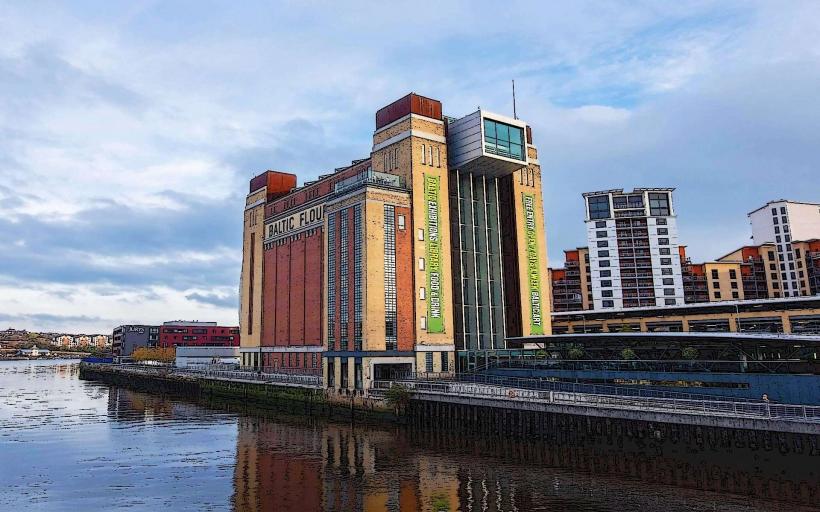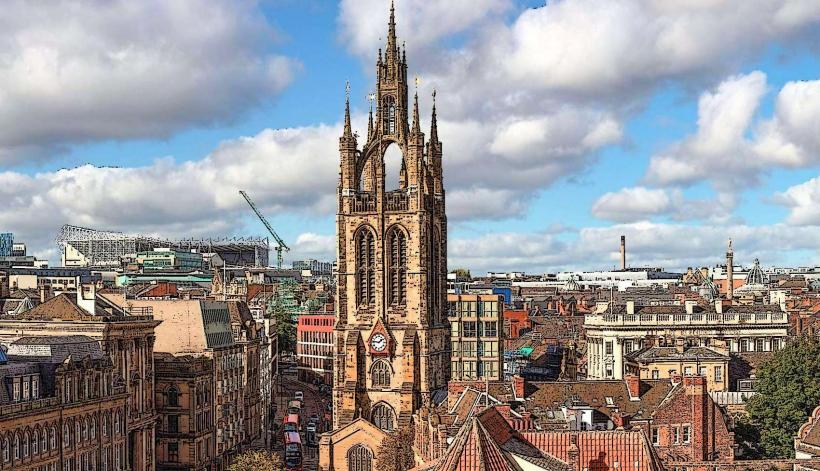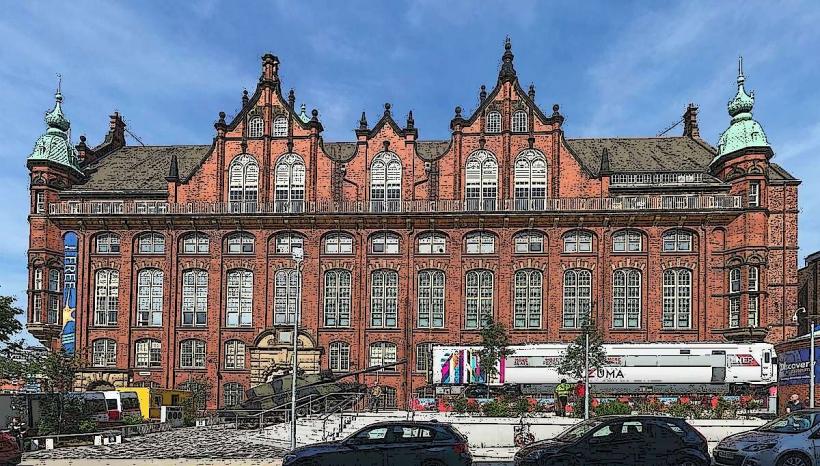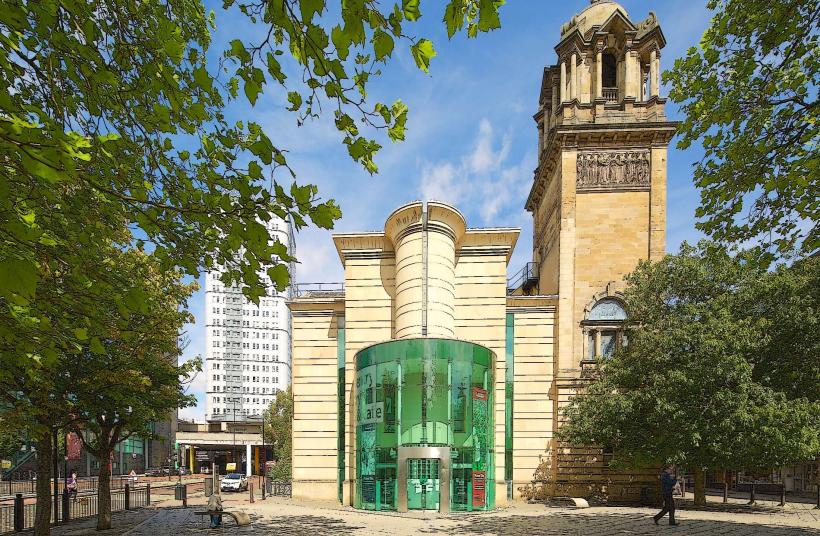Information
Landmark: Victoria TunnelCity: Newcastle
Country: United Kingdom
Continent: Europe
The Victoria Tunnel in Newcastle upon Tyne is a fascinating and historic underground structure that offers a unique insight into the industrial heritage of the city. Originally built in the early 19th century, the tunnel has been preserved as an important heritage site and is a popular location for tours, allowing visitors to explore its rich history and significance.
History and Construction
1. Origins and Purpose
The Victoria Tunnel was constructed between 1831 and 1833 as part of a large-scale industrial project aimed at facilitating the transportation of coal from the coal mines of the surrounding areas to the River Tyne. During the early 19th century, Newcastle was a major coal-producing region, and transporting coal via horse-drawn wagons was crucial to the city's economy.
- The tunnel was designed to be a tramway tunnel, where coal could be transported from the coalfields of Springwell and Leam Lane to the Quayside in Newcastle, where it could be loaded onto ships for export.
- The tunnel is about 2 miles (3.2 km) long, running beneath the city from the Ouseburn Valley to the River Tyne, passing through a series of underground chambers and passages.
2. Engineering and Design
The Victoria Tunnel was designed by the renowned civil engineer Thomas Heworth, and it is a remarkable example of early 19th-century engineering. The tunnel was hand-dug, and the construction process was labor-intensive and took several years to complete.
- The tunnel was built with a brick-lined structure and was wide enough to accommodate horse-drawn wagons. The walls and ceiling of the tunnel are made of red brick, and the roof was designed to be arched to allow for strength and stability.
- Ventilation shafts were built along the tunnel’s route to allow fresh air to circulate, which was important for the health and safety of the workers and to prevent the buildup of dangerous gases.
3. Coal Transport and Operation
The tunnel served as an important transportation route for the Newcastle coal trade. It allowed coal to be moved efficiently from the mines to the river, bypassing the difficult terrain above ground. At its height, the tunnel was capable of transporting up to 3,000 tons of coal each week.
- Coal was transported in wagons that were pulled by horses along a tramway within the tunnel. The wagons would then be lifted by cranes to the surface, where they were loaded onto ships docked at the Quayside.
- The tunnel continued to operate for several decades, but its use began to decline as transportation technology advanced and new methods of coal transport became more efficient.
Decline and Abandonment
As the coal industry in the region began to decline in the late 19th and early 20th centuries, the Victoria Tunnel’s role in transporting coal diminished. The development of other transportation systems, including railways and road networks, rendered the tunnel obsolete for industrial use.
- By the early 20th century, the tunnel was largely abandoned and fell into disuse. It remained forgotten for many years, with parts of the tunnel falling into disrepair.
Rediscovery and Preservation
1. Rediscovery in the 1980s
In the 1980s, the Victoria Tunnel was rediscovered during renovation work in the Ouseburn Valley area. The tunnel had remained hidden beneath the streets of Newcastle, and it was only through chance that it came to the attention of local historians and preservationists.
- In the following years, efforts were made to restore and preserve the tunnel as a historical site. The tunnel’s unique status as a 19th-century industrial structure made it an important part of Newcastle’s heritage, and it was recognized as a scheduled monument by English Heritage.
2. Restoration and Public Access
Today, the Victoria Tunnel is open to the public and is operated by the Victoria Tunnel Trust. The Trust offers guided tours of the tunnel, which provide visitors with a chance to learn about its history and experience what life would have been like for the workers who once toiled in the dark, underground passages.
- Restoration work has focused on ensuring the tunnel remains structurally sound and accessible to visitors. Many sections of the tunnel have been cleaned and reinforced to make it safe for public tours. The restoration has also uncovered a range of historical artifacts and features, adding to the interest and value of the site.
- Visitors can walk through the tunnel, exploring its narrow passages, the remains of its original tramway track, and the various chambers used to store coal. The tours also include information about the tunnel’s construction, the workers who built and operated it, and its role in the city’s industrial past.
The Tunnel Today
1. Public Tours
The Victoria Tunnel is now one of the most popular heritage sites in Newcastle, attracting visitors from all over the world. The tunnel offers guided tours that take visitors on a journey through the past, with a focus on the industrial history of Newcastle, the coal trade, and the engineering feats of the tunnel’s construction.
- The tours include a mix of history, engineering, and local storytelling, providing a fascinating glimpse into the underground world of 19th-century industrial Newcastle. Visitors can see the tunnel’s brick-lined walls, the remnants of the tramway tracks, and even some of the original ventilation shafts that were used to provide fresh air to the tunnel.
- Special themed tours, such as ghost tours or Victorian-themed experiences, are sometimes offered, which add a fun and immersive aspect to the visit.
2. Cultural and Educational Role
In addition to serving as a tourist attraction, the Victoria Tunnel is also a place for education and outreach. Schools and educational groups often visit the site to learn about Newcastle’s industrial history, the role of the coal industry, and the technology of the Victorian era.
- The tunnel also hosts events and workshops, offering a platform for local history groups, historians, and educators to engage the public in discussions about the city’s past and its evolution into the modern industrial center it became.
3. Community and Local Engagement
The Victoria Tunnel is an important part of the Ouseburn Valley community, which has undergone significant regeneration in recent years. The area has become known for its artistic and cultural spaces, including galleries, studios, and independent businesses. The tunnel’s preservation is a key part of the valley’s cultural landscape.
- The Victoria Tunnel Trust also works closely with the local community to raise awareness about the tunnel’s history and to promote its preservation for future generations.
Significance and Legacy
The Victoria Tunnel is a remarkable example of industrial history and engineering in Newcastle. It provides an invaluable insight into the role that coal mining and transport played in the development of the city, and it represents the ingenuity and hard work of the men who built and operated it.
- The tunnel is a historic treasure that serves as a reminder of Newcastle’s industrial past, its connection to the coal trade, and its position as one of the most important industrial cities in Britain during the 19th century.
Today, the Victoria Tunnel continues to be a cultural and educational resource, helping visitors to better understand the history of the region and the industrial revolution that shaped modern-day Newcastle. Whether you're interested in history, engineering, or simply the thrill of exploring an underground structure, the Victoria Tunnel offers a fascinating glimpse into the city’s past.










